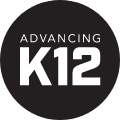Playing Nice: The EdTech Interoperability Landscape
BY Advancing K12 Staff
**Editor's note: This article originally appeared in EdTech Review.
No edtech provider can “do everything.” A vendor’s choice between expanding a product’s feature set or making that same product more compatible with existing options is no longer as cut-and-dry as it may once have been. District decision makers have spoken—interoperability is the new differentiator.
But what does interoperability even mean these days? How does it differ based on its purpose? What are all these data standards we keep hearing about and what role do they play in this discussion?
Let’s take a closer look at three different types of interoperability from a nontechnical perspective in an effort to clear up the sometimes-vague differences between similar-sounding terms and acronyms.
1) Data Integration
As the edtech community continues to seek out more effective ways to access, analyze, and share data, the elusive “dashboard” has risen to the top of wish lists everywhere. The concept of bringing all relevant data together in one place, regardless of its origin system, is made possible only through the adoption of data standards across platforms.Here’s what you need to know about the three most commonly referenced enterprise-level eddata standards:
Common Education Data Standards (CEDS)
CEDS is unique in this list, because it is the rock upon which many different standards, data repositories, and frameworks are built. CEDS is not in and of itself an integration or interfacing tool; its value lies in the “common vocabulary” it defines for developers, data stewards, and other members of the P-20W (early learning-workforce) community. The standards that follow are both closely aligned with and actively involved in continued improvements to the CEDS.Ed-Fi Data Standard
The Ed-Fi Alliance, a “group of educators, technologists, and thought leaders shaping the future of education technology” has approached the issue of data integration from two fronts: getting edtech systems to connect with each other, and turning the resulting connected data into actionable insights. The CEDS-aligned Ed-Fi Data Standard, coupled with the supporting Ed-Fi Technology, including an Operational Data Store and teacher-focused Dashboard, creates a seamless flow of data when fully implemented.Several states have adopted or are in the process of adopting a real-time transactional interface with districts for data reporting. For those familiar with the typical state reporting model of periodic data file uploads, the amount of time and effort this saves will be obvious.
Schools Interoperability Framework (SIF)
SIF is sponsored, developed, and maintained by the Access 4 Learning (A4L) Community, a “unique, non-profit collaboration composed of schools, districts, local authorities, states, US and International Ministries of Education, software vendors, and consultants who actively address all aspects of learning information management and access to support learning.”SIF was one of the first educational data models to rise to prominence, and it has continued to evolve to meet the ever-changing demands of its community. SIF adoption currently includes schools representing over 55 million students in the United States. The SIF 3.x specification, released in 2013, featured significant changes to both the Data Model and Infrastructure, making SIF more accessible for developers and easier to implement for districts.
Can there be only one?
One of the biggest problems with the current state educational data standards is the paradox of having multiple, competing standards in the marketplace. Not only does that mean twice as much development work for vendors, it also opens the door to the possibility of a state education agency deciding to adopt a new standard or switch from one to the other, rendering existing district integration processes obsolete. Will we ever see a universally adopted model? The question remains open…
2) Content Integration
Accessible data is a boon for everyone, but how does interoperability affect the day-to-day learning experience? As instruction becomes increasingly blended, teachers are finding lesson inspirations from many different sources. The challenge lies in bringing those lessons from the far corners of the Internet and various software platforms into one centralized learning management system.IMS Global has almost exclusively led the charge in this area. Here’s what you need to know about the different acronyms and what to look for when reviewing various products:
Question and Test Interoperability (QTI) / Accessible Portable Item Protocol (APIP)
QTI and APIP are closely related, with both being relevant to “the exchange of item and test content and results data between authoring tools, item banks, test construction tools, learning platforms, assessment delivery systems, and scoring/analytics engine.” In short, if it has to do with testing, these are the specifications you’re looking for.APIP encompasses all of QTI, with an added layer of accessibility features to address the needs of individual students. Affected groups include visual and auditory impairments, ELL students, and those with specific test environment needs. The full list of APIP-supported accommodations can be found here.
Learning Tools Interoperability (LTI)
LTI is the standard by which multiple different platforms, apps, and tools can come together to create a more seamless experience for the learner. Imagine an augmented reality biology app with which students can pass their phones over the old class skeleton to reveal tissue layers or circulatory systems, then take a quiz on the spot. It sounds like a fun lab day, but without interoperability, it could mean a lot of extra work for the teacher.With LTI standards in place, that quiz grade can automatically pass back into the classroom’s LMS, the biology app can identify whether the student belongs to a specific learning group, and no custom development work is needed to make any of it happen. The old “if it’s not compatible with [insert LMS here], we can’t use it,” logic is out the window.
Common Cartridge (CC)
Whereas LTI addresses the need for different systems to exchange information about the learner or a given assignment, Common Cartridge provides a standard format for the development and sharing individual pieces of content. Common Cartridge content—from simple exams to full-scale, multimedia lessons—can be “plugged in” to learning platforms to provide a consistent, high quality experience without any concerns about formatting errors or functionality gaps. More than one district has already made it clear to vendors that they will not purchase or maintain licenses for any learning content that does not conform with Common Cartridge requirements.
3) Systems Integration
Data standards, when applied correctly on a large enough scale, can fundamentally change the user experience for the better, but how does it work? It’s not enough for systems to speak the same language if they’re not actually talking to each other. But that integration can take many forms. Here are three of the most popular:
Embedded Integration
This is what happens when two providers form a symbiotic partnership to provide built-in functionality via the other’s interface. Examples of this might include using an online payment vendor to pay lunch balances via a student information system’s parent portal or pressing a button in a human resources system to launch a background check from another company. This type of integration requires formal partnership and development work by two or more vendors.Application Programming Interface (API)
APIs are fast becoming an expectation for some of the larger, foundational systems in a school’s technology infrastructure. An API is essentially a protocol with which a system makes data fields available in a standard and transparent format in such a way that other systems can pull it when needed via an “API call.” One of the more prevalent examples can be seen every time a teacher enters a grade in a learning management system and it is passed over to the student information system without the need for dual entry. Or when a class is created in the LMS and the entire roster populates from the SIS. One system “consumes” the API of the other system, extracting pure data and loading it in the context of its own interface.Batch Imports and Exports
What if a system does not have embedded integration or an API for a particular function? How does one go about getting the data out of there and into something else? The traditional approach to integration is built on recurring imports and exports. With this method, selected data is “pulled out” of one system in a standard format either manually or on a scheduled basis. The data is then either uploaded by the user in a standard file format (.csv is common) or, in an automated situation, sent to a specified location on the network, where it is “grabbed” by the system that needs it. The most common way to implement this type of integration is to set the system(s) to run these imports and exports overnight. It is not a viable solution for anything requiring real-time updates.
The Future of Interoperability
Maybe one day we’ll live in a world where an evolutionary edtech provider comes along with a product that does everything better than anyone else. Until then, the need to integrate data, content, and systems will remain a priority.Proprietary, complicated, and locked down aren’t going to cut it in the age of interoperability. Open, accessible, and flexible will win out every time.
WHAT'S NEXT FOR YOUR EDTECH? The right combo of tools & support retains staff and serves students better. We'd love to help. Visit skyward.com/get-started to learn more.

|
Advancing K12 Staff Edtech Thought Leaders |




